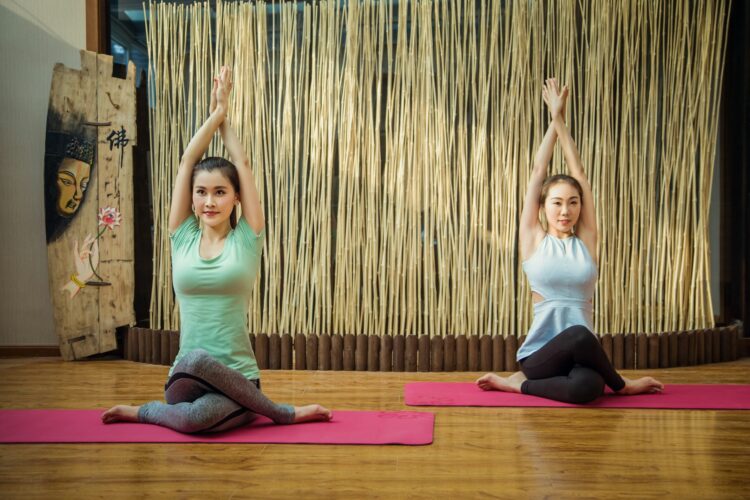Yoga is a practice rooted in mindfulness—mindfulness of our breath, our movements, and increasingly, our impact on the planet. In 2025, the eco-conscious yogi is no longer a niche identity; it’s the new standard. From mats to props to apparel, sustainability is now a top priority for brands and practitioners alike. If you’re looking to align your values with your practice, investing in eco-friendly yoga gear is a powerful step.
In this guide, we’ll explore the best sustainable yoga products on the market, what to look for in eco-conscious gear, and how to make choices that support both your well-being and the Earth.
Why Choose Eco-Friendly Yoga Gear?
The yoga industry has grown exponentially in recent years, and so has the demand for mass-produced, synthetic products. Unfortunately, many traditional yoga mats and accessories are made from PVC (polyvinyl chloride), a plastic that’s harmful to both the environment and our health. In contrast, eco-friendly yoga gear is designed to:
- Reduce waste
- Minimize exposure to toxins
- Support ethical labor practices
- Last longer, with quality over quantity
- Align with the yogic principle of ahimsa (non-harming)
Let’s break down some of the best sustainable picks for conscious yogis in 2025.
1. Eco-Friendly Yoga Mats
Top Pick: Liforme Eco Yoga Mat
- Material: Biodegradable eco-polyurethane and natural rubber
- Why It’s Sustainable: Liforme’s mats are PVC-free, fully biodegradable within 1–5 years in normal landfill conditions, and produced in energy-efficient facilities.
- Price: ~$150
- Bonus: Comes in recyclable packaging and includes a free yoga mat bag.
Runner-Up: Jade Yoga Harmony Mat
Made from natural rubber tapped from rubber trees, Jade plants a tree for every mat sold. The grip is outstanding, and the eco-credentials are strong.
2. Sustainable Yoga Blocks
Top Pick: Manduka Cork Yoga Block
- Material: 100% sustainable cork
- Why It’s Eco-Friendly: Cork is harvested without cutting down trees, and Manduka sources its materials from responsibly managed forests.
- Durability: Long-lasting and naturally antimicrobial.
Alternative: Recycled Foam Blocks by Hugger Mugger – Made from recycled EVA foam, offering a softer, lighter alternative to cork.
3. Eco Yoga Straps
Top Pick: Halfmoon Organic Cotton Yoga Strap
- Material: 100% organic cotton, nickel-free metal buckle
- Why It’s Sustainable: Organic farming avoids harmful pesticides and supports soil health. Halfmoon is a Certified B Corporation, ensuring ethical production practices.
Why We Love It: Available in multiple lengths and beautiful earthy tones. Durable, functional, and earth-conscious.
4. Sustainable Yoga Bolsters
Top Pick: Brentwood Home Crystal Cove Yoga Bolster
- Filling: Recycled polyester
- Cover: Breathable blend of organic cotton and hemp
- Certifications: GREENGUARD Gold Certified for low chemical emissions
This bolster is perfect for restorative yoga and meditation, offering firm support while minimizing environmental impact. Plus, it looks gorgeous in any home yoga studio.
5. Eco-Conscious Apparel
Fast fashion has a massive carbon footprint, and that includes yoga wear. Thankfully, many brands are stepping up to deliver eco-conscious, high-performance activewear.
Top Brand: Girlfriend Collective
- Materials: Recycled water bottles (RPET), fishing nets, and other waste
- Why They Rock: Transparent supply chain, ethical labor, inclusive sizing, and eco-packaging
- Top Picks: High-rise leggings and Paloma bra—moisture-wicking, compressive, and stylish
Also Recommended:
- prAna: Fair Trade Certified™ clothing made from hemp, organic cotton, and recycled materials
- Wolven: Known for vibrant prints and carbon-neutral production
6. Reusable Water Bottles
Hydration is key during yoga practice, and ditching plastic bottles is a no-brainer for any eco-conscious yogi.
Top Pick: Hydro Flask Standard Mouth Bottle
- Why It’s Eco-Friendly: BPA-free, made from stainless steel, and built to last for years
- Bonus: Keeps drinks cold for 24 hours or hot for 12 hours—perfect for hot yoga or tea after class
Alternative: Soma Glass Bottle – Sleek, lightweight, and made from shatter-resistant glass with a sustainable bamboo cap.
7. Natural Yoga Mat Cleaners
Traditional cleaning sprays often contain artificial fragrances and harsh chemicals. Opting for natural alternatives helps protect your mat and your skin.
Top Pick: Asutra Natural Yoga Mat Cleaner
- Ingredients: Essential oils, water, and plant-based cleaners
- Scent Options: Lavender, tea tree, lemongrass, and more
- Eco-Note: Comes in recyclable packaging and includes a microfiber cloth
DIY Option: Mix water, white vinegar, and a few drops of essential oil in a spray bottle. Cheap, effective, and toxin-free.
8. Meditation Cushions Made Sustainably
Support your seated practice with a cushion that’s good for your spine and the environment.
Top Pick: Bean Products Zafu Meditation Cushion
- Filling: Organic buckwheat hulls
- Cover: Organic cotton or hemp, removable and washable
- Why It’s Great: Provides firm support while conforming to your body; available in a wide range of colors
Upgrade Option: Brentwood Home’s meditation cushion (from the Crystal Cove line) with luxurious, eco-friendly materials and ergonomic design.
9. Earth-Conscious Yoga Bags
Don’t forget about how you carry your gear. Look for bags made from recycled or natural materials.
Top Pick: Kindfolk Yoga Mat Duffle Bag
- Materials: Vegan leather and canvas, some with recycled content
- Why We Love It: Stylish, functional, and 1% of every purchase goes to anti-human trafficking organizations
Also Check Out: Gaiam’s hemp yoga mat bags—lightweight, breathable, and durable.
Tips for Building a Sustainable Yoga Practice
- Buy Less, Buy Better: Choose high-quality items that last longer rather than frequently replacing cheaper gear.
- Support Ethical Brands: Look for certifications like GOTS (Global Organic Textile Standard), OEKO-TEX, Fair Trade, and B Corp.
- Recycle or Donate Old Gear: Many organizations accept gently used mats and clothes. Don’t let old gear go to the landfill.
- Go Digital: Reduce paper waste by opting for digital yoga classes, guides, or journals.
- Practice Ahimsa in All Things: Let your sustainability efforts extend beyond gear to your diet, travel, and daily habits.
Final Thoughts
The shift toward sustainability isn’t just a trend—it’s a return to the roots of yoga itself, which teaches awareness, compassion, and responsibility. By choosing eco-friendly yoga gear, you honor not just your body and mind, but also the planet that supports your practice.
In 2025, being a conscious yogi means looking beyond the mat. It’s about every block, strap, bottle, and breath being in harmony with the world around you.
Choose mindfully. Practice intentionally. Live sustainably.
Namaste.







No Comments
Leave Comment